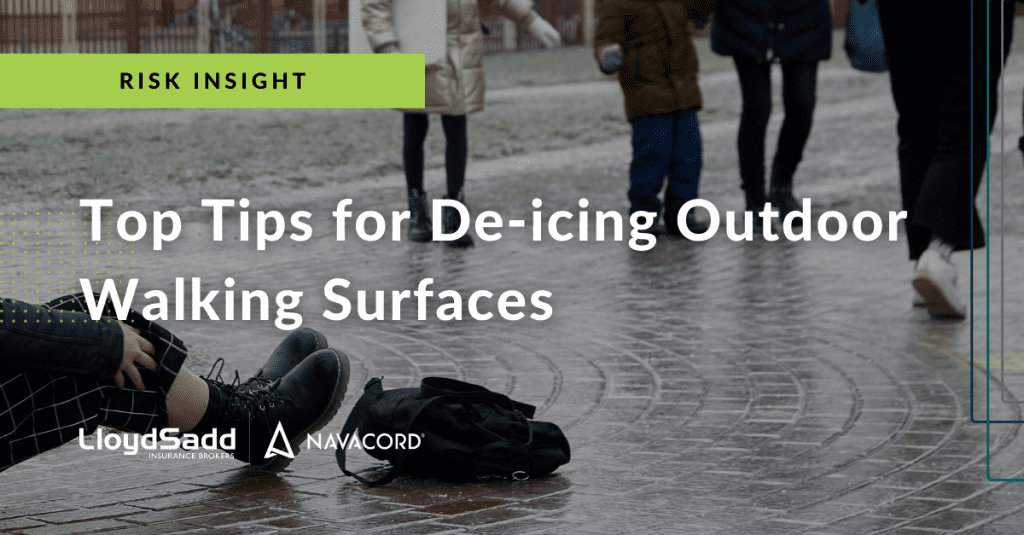Top Tips for De-icing Outdoor Walking Surfaces

Keeping outdoor walking surfaces—such as parking lots and sidewalks—clear of ice in the winter is a crucial practice at many workplaces. Not only does ice removal offer aesthetic benefits, it can also help keep you, your co-workers and the general public (e.g., customers or passersby) protected from the risk of slips and trips on the job site.
With this in mind, here’s how you can play your part in promoting effective and safe de-icing measures at the workplace this winter:
- Use the right mixture. The most effective method for de-icing an outdoor walking surface is by applying a chemical mixture throughout the area to either melt any ice that already exists or prevent ice from forming altogether. This mixture typically includes rock salt (sodium chloride), magnesium chloride pellets or calcium chloride pellets. That being said, make sure to use the correct mixture for the conditions at hand.
- Watch the weather. Keep an eye on the weather forecast to determine when you need to apply the de-icing mixture to outdoor walking surfaces. This mixture should be applied when temperatures are below freezing or if conditions such as snow, hail or sleet are possible.
- Apply the mixture correctly. Make sure you apply the de-icing mixture in thin, even layers across outdoor walking surfaces. Try to apply one layer before conditions occur, one or more layers while these conditions are taking place and a final layer after conditions have passed. Keep in mind that if there is snow on a surface, it will need to be shoveled first before you can apply the de-icing mixture. Simplify the de-icing process by shoveling snow after every few centimetres of accumulation rather than all at once.
- Protect your hands. Keep your hands properly protected when applying the de-icing mixture by wearing thick mittens and using a scoop to distribute the mixture.
- Eliminate excess materials. When temperatures warm up and the de-icing mixture is no longer necessary, be sure to properly dispose of any remaining mixture left across outdoor walking surfaces. Leaving excess mixture on a surface when it isn’t needed could end up creating, rather than removing, slip and trip hazards, as well as potentially damaging the surface itself.
Consult your supervisor for more information on proper de-icing procedures at the workplace.
To download insight, click here: LS_Risk Insight_Top Tips for De-icing